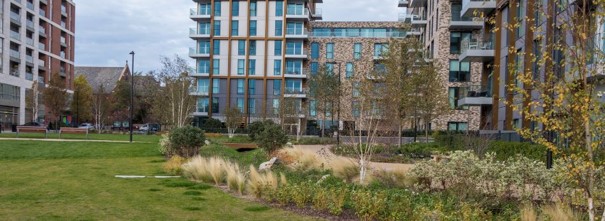
Valuing the benefits of blue-green infrastructure
ciriabest (CIRIA's Benefits EStimation Tool) makes assessing the benefits of blue-green infrastructure quicker and easier, without the need for full-scale economic inputs. ciriabest is an online, spatial tool which guides the user through the benefits estimation process.
ciriabest provides a structured way to estimate the value of the multiple benefits of blue-green projects. It provides a robust method to estimate the monetary value of a range of benefits that are not normally quantified. Rather than assigning fixed values, ciriabest encourages the user to think about the level of confidence they have in the data they have used, and the value assigned to the benefits in the context of the project. The main goal of ciriabest is to enable robust business cases to be made to give confidence to decision makers in the value of such projects to society, the environment and the economy.
ciriabest:
- encourages conversation between those involved in a project
- shows what benefits can be provided by a project in comparison with a ‘do nothing’ baseline
- is map-based, helping users to visualise the context of the project and import their own data
- guides the user through a structured process of benefits estimation
- enables a number of projects to be evaluated and compared within an identified area boundary
- provides downloadable pdf outputs for use in presentations, funding bids and business plans
- can be used in retrospect to demonstrate the multiple benefits of an existing project
- draws on the latest and most reliable published data, saving time and effort in locating evidence
ciriabest licence options
Licences to use ciriabest are available for purchase (terms and conditions apply). A 10% discount will be automatically applied for CIRIA and susdrain members.
-
Individual user licence £600 + VAT per annum
-
Multiple users' licence* £2,500 + VAT per annum
Licensed users can log into ciriabest using their CIRIA account credentials. Alternatively, follow the prompt to create an account or reset password if needed.


Experience ciriabest
“As a retrofit SuDS practitioner, I need options to help me clearly explain to budget holders and decisionmakers what we truly gain from well designed and installed SuDS. The ciriabest tool does exactly that, enabling a SuDS designer to give an objective and clear cost for delivering multi-benefit solutions.” - Ian Titherington, Water, Flood and Coal Tip Safety Division, Welsh Government
Background
ciriabest was first produced and released as a spreadsheet tool ('BeST') in 2015 and was updated in 2019 ('B£ST').
Previous updates to ciriabest are presented in the table below:
|
2015 version |
2019 version |
|
Focused on SuDS measures only |
Also includes NFM (natural flood management) and other elements of blue-green infrastructure |
|
Includes evidence up to 2015 |
Includes evidence up to 2018 |
|
Monetary values in 2014 prices |
Monetary values in 2017 prices |
|
Includes 19 monetised and 4 non-monetised benefit categories |
Following rationalisation and addition of new categories (noise and traffic calming), includes 15 monetised and 3 non-monetised benefit categories |
|
Results presented for ecosystem service and triple bottom line categories |
Interactive results dashboard in tool |
|
Detailed information requirements |
Information requirements set out more clearly for both simple and detailed assessments |
|
Results presented in terms of ecosystem services and triple bottom line |
Results presented in terms of ecosystem services and natural, social and other capitals |
The usability of the Benefits Estimation Tool is improved, it follows a simple structure that begins with coarse screening and qualitative assessments to quickly identify the benefits to evaluate further. It then provides support to help quantify and monetise each benefit. On completion of the evaluation, the tool provides a series of graphs and charts to present the benefits in terms of ecosystem services and natural, social and other capitals.
'B£ST' 2019 tutorials are available to view on our YouTube channel.
Click here to view 'B£ST' tutorials.
Downloads
Please be aware some of these free downloads require logging in, or registration into the CIRIA website. To download the tool, please follow the instructions and "Add to Cart".
B£ST 2019 tools
W047a B£ST: Benefits Estimation Tool – Valuing the benefits of blue-green infrastructure (Release 5.1.1 20/09/19)
W047c B£ST: Comparison Tool – Enables the comparison of more than one assessment (Release 3.01 12/02/19)
B£ST 2019 guidance
W047b B£ST: Guidance – Guidance to assess the benefits of blue and green infrastructure using B£ST (Release 5 v0B June 2019)
B£ST - Presentation - PPT with notes (Release 2, 12/02/19)
B£ST 2019 case studies
A number of case studies using B£ST 2019 have been developed. These include the B£ST spreadsheet (.xls) and the case study information (pdf).
Burpham Court case study
Burpham Court B£ST spreadsheet
Clothworkers Wood case study
Clothworkers Wood B£ST spreadsheet
Killingworth and Longbenton case study
Killingworth and Longbenton B£ST spreadsheet
Roundhay Park case study
Roundhay Park B£ST spreadsheet
Glasgow SWMP case study
Glasgow SWMP B£ST spreadsheet
Other ciriabest resources
ciriabest is underpinned by evidence and information, these have been reviewed and used since 2013 and links to information can be found here.
Demonstrating the multiple benefits of SuDS - A business case - Literature review (2013)
Demonstrating the multiple benefits of SuDS - A business case - review of sources (2015)
Making B£ST better - Evidence review summary (2018)
ciriabest focuses on the benefits of blue-green infrastructure, rather than the costs. There have been projects and initiatives to capture the costs of SuDS. However, cost information is going to be very context specific depending on the site, the design approach, components and maintenance arrangements. Further information on costs can be found here.



